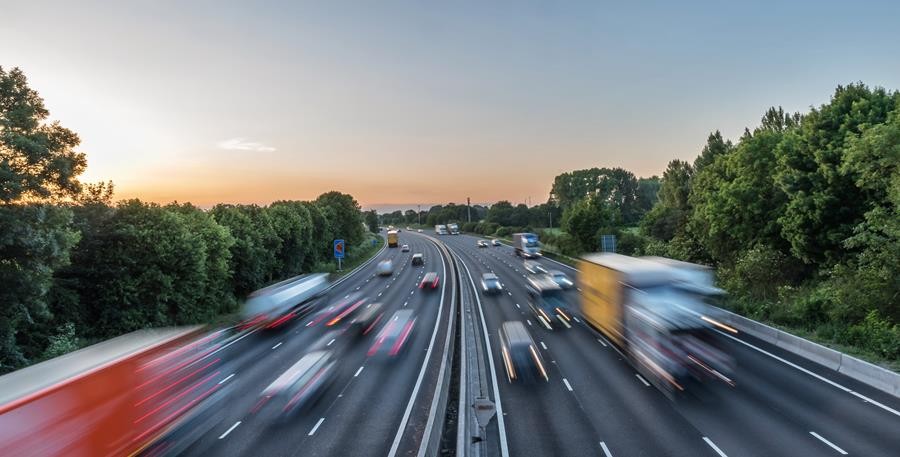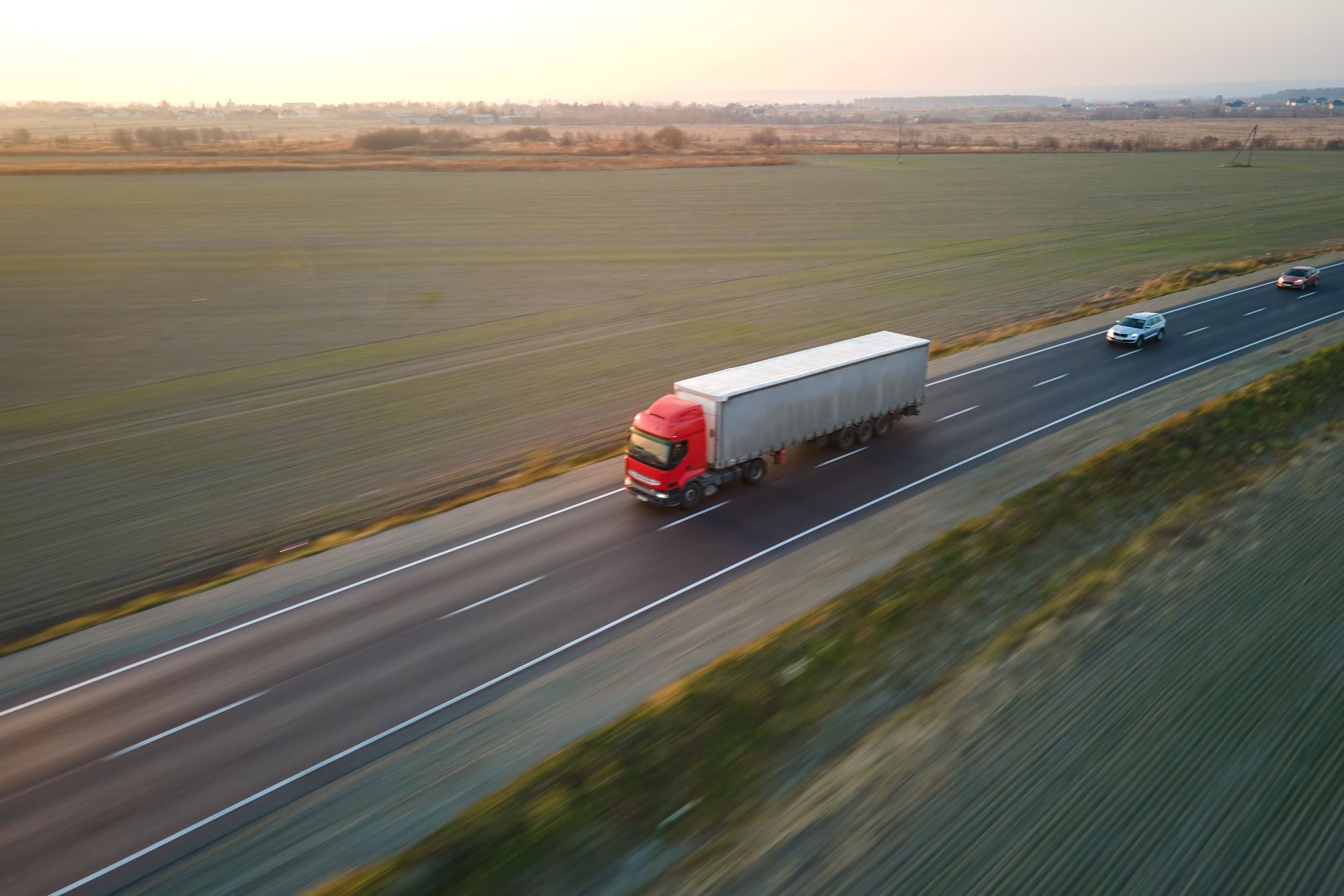
Susie Jones
Cesta k udržateľnosti: Európska výzva v oblasti emisií v odvetví dopravy
Vytvorené: 08. 08. 2024
•
Aktualizované: 08. 08. 2024
Správa Clean Technica z roku 2024 odhalila, že viac ako 25 % emisií z cestnej dopravy v Európe pochádza z odvetvia dopravy, pričom ťažké nákladné vozidlá sú zodpovedné za 85 % emisií (zvyšok tvoria autobusy a autokary).
Pri súčasnom tempe bude samotný sektor dopravy v roku 2030 predstavovať takmer polovicu európskych emisií skleníkových plynov - od roku 1990 sa emisie z dopravy v Európe naďalej zvyšujú o viac ako štvrtinu. Emisie v celom hospodárstve sa znížili - od vrcholu v roku 2007 sa však sektor dopravy dekarbonizuje viac ako trikrát pomalšier ako zvyšok hospodárstva.
Čo je príčinou zvyšovania emisií CO2 v odvetví nákladnej dopravy?
Od rozšírenia elektronického obchodu a služieb doručovania tovaru do domu sa výrazne zvýšil dopyt po väčšom počte nákladných vozidiel na cestách. Následne zvýšený dopyt viedol k nárastu emisií CO2 v odvetví nákladnej dopravy.
Správa Clean Technica o tonáži vnútroštátnej nákladnej dopravy v rôznych druhoch dopravy (cestnej, železničnej a vodnej) odhalila, že cestná nákladná doprava je v Európe dominantnejšia ako železničná a vodná v porovnaní s inými geografickými oblasťami (USA a India). Hoci je Čína viac závislá od cestnej nákladnej dopravy, správa odhalila, že krajina využíva na rozvoz tovaru približne 600 000 elektrických nákladných vozidiel.

Aké plány na zníženie emisií CO2 existujú v Európe?
Európsky parlament prijal Európsky zákon o klíme na riešenie rastúcich emisií CO2. V rámci tohto zákona sa cieľ EÚ znížiť čisté emisie skleníkových plynov do roku 2030 zvýšil na minimálne 55 % - čím sa klimatická neutralita do roku 2050 stala právne záväznou.
V máji 2024 schválili krajiny EÚ zákon o znížení emisií CO2 z nákladných vozidiel. Nový zákon bude vyžadovať, aby nové ťažké nákladné vozidlá predávané v EÚ od roku 2040 boli bez emisií - a zároveň bude presadzovať 90 % zníženie emisií CO2 z nových nákladných vozidiel do toho istého roku. Výrobcovia musia predať veľké množstvo ťažkých nákladných vozidiel úplne bez emisií CO2 - napríklad elektrických vozidiel a vozidiel na vodíkové palivo - aby vykompenzovali zostávajúci predaj vozidiel s emisiami CO2.
Aké opatrenia môžu manažéri vozového parku prijať na zníženie emisií CO2?
Manažéri vozového parku môžu prijať opatrenia na zníženie emisií CO2:
Prudké brzdenie, prudké zrýchľovanie a voľnobeh môžu zvýšiť spotrebu paliva a emisie skleníkových plynov - Hoci monitorovanie správania vodičov môže byť náročné, technológia umelej inteligencie môže vodičom a manažérom vozového parku poskytovať nepretržitú spätnú väzbu. Viac informácií o tom, ako AI môže pozitívne ovplyvniť udržateľnosť v odvetví nákladnej dopravy.
Vozové parky so staršími vozidlami môžu prejsť na hydrogenovaný rastlinný olej (HVO), vodík alebo nákladné vozidlá s elektrickým pohonom a výrazne tak znížiť emisie. Manažéri vozových parkov však musia zvážiť vzdialenosť, ktorú môžu vozidlá s alternatívnym pohonom prejsť, a dôsledky na náklady.
Účet SNAP umožňuje manažérom vozových parkov znížiť počet najazdených kilometrov - vďaka viac ako 600 servisným partnerom, ktorí sú k dispozícii zákazníkom účtu SNAP, môžu manažéri vozových parkov plánovať pre svojich vodičov nočné zastávky na trase.
Existuje infraštruktúra na nabíjanie elektrických nákladných vozidiel?
Podľa štúdie PwC bude do roku 2030 tretina všetkých nákladných vozidiel v Európe elektrických. Keďže spoločnosti prevádzkujúce vozové parky podnikajú kroky smerom k elektrifikácii, zastávky pre nákladné vozidlá v celej Európe musia byť schopné uspokojiť dopyt po elektrických nabíjacích staniciach.
Zabezpečenie infraštruktúry bude pre mnohé zastávky nákladných vozidiel a čerpacie stanice nákladné. Avšak tie, ktoré už majú nabíjačky pre elektrické vozidlá, majú dobré predpoklady na to, aby využili budúce vlny elektrických nákladných vozidiel. Do roku 2030 sa počet verejných nabíjacích staníc v Európe zvýši na viac ako 3 600 - EÚ predložila ambiciózny zákon o nabíjaní s nariadením o infraštruktúre pre alternatívne palivá (AFIR). V nariadení AFIR sa plánuje vybaviť hlavnú cestnú sieť nabíjacími stanicami každých 60 km, čo poskytne dostatok nabíjacej energie a vodíkovej kapacity na to, aby 9 % vozového parku nákladných vozidiel a autobusov do roku 2030 bolo bez emisií.
Ktorá európska krajina má najviac emisií CO2?
V roku 2021 boli za najvyššie celkové emisie skleníkových plynov (GHG) zodpovedné Nemecko, Francúzsko a Taliansko - v rozmedzí od 375 000 do 740 000 kiloton CO2. Krajiny s väčším počtom obyvateľov však produkujú viac emisií skleníkových plynov - preto pohľad na celkové emisie skleníkových plynov poskytuje skreslený obraz.
Pri nestrannom pohľade na emisie je pohľad iný - Luxembursko, Írsko a Česká republika vyprodukovali v roku 2021 najvyššie emisie na obyvateľa v EÚ.
Aký spôsob prepravy tovaru je najšetrnejší k životnému prostrediu?
Preprava tovaru po železnici je jedným z najčistejších spôsobov dopravy, ale poskytuje aj ďalšie výhody:
Znižuje preťaženie ciest, čo prispieva k zlepšeniu kvality ovzdušia.
Železnica ponúka rýchlejší spôsob prepravy tovaru a odstraňuje prekážky v ťažkej doprave.
Ďalším ekologickým spôsobom prepravy tovaru sú nákladné vozidlá na alternatívne palivá. Hydrogenovaný rastlinný olej (HVO) môže okamžite znížiť až 90 % emisií skleníkových plynov v porovnaní so štandardnou naftou počas celého životného cyklu výrobku. Spoločnosť Certas Energy HVO stojí za prechodom na čistejšiu alternatívu - pomáha podnikom plniť ich ciele v oblasti udržateľnosti a podniknúť zmysluplné kroky smerom k ich čistej nulovej budúcnosti.



